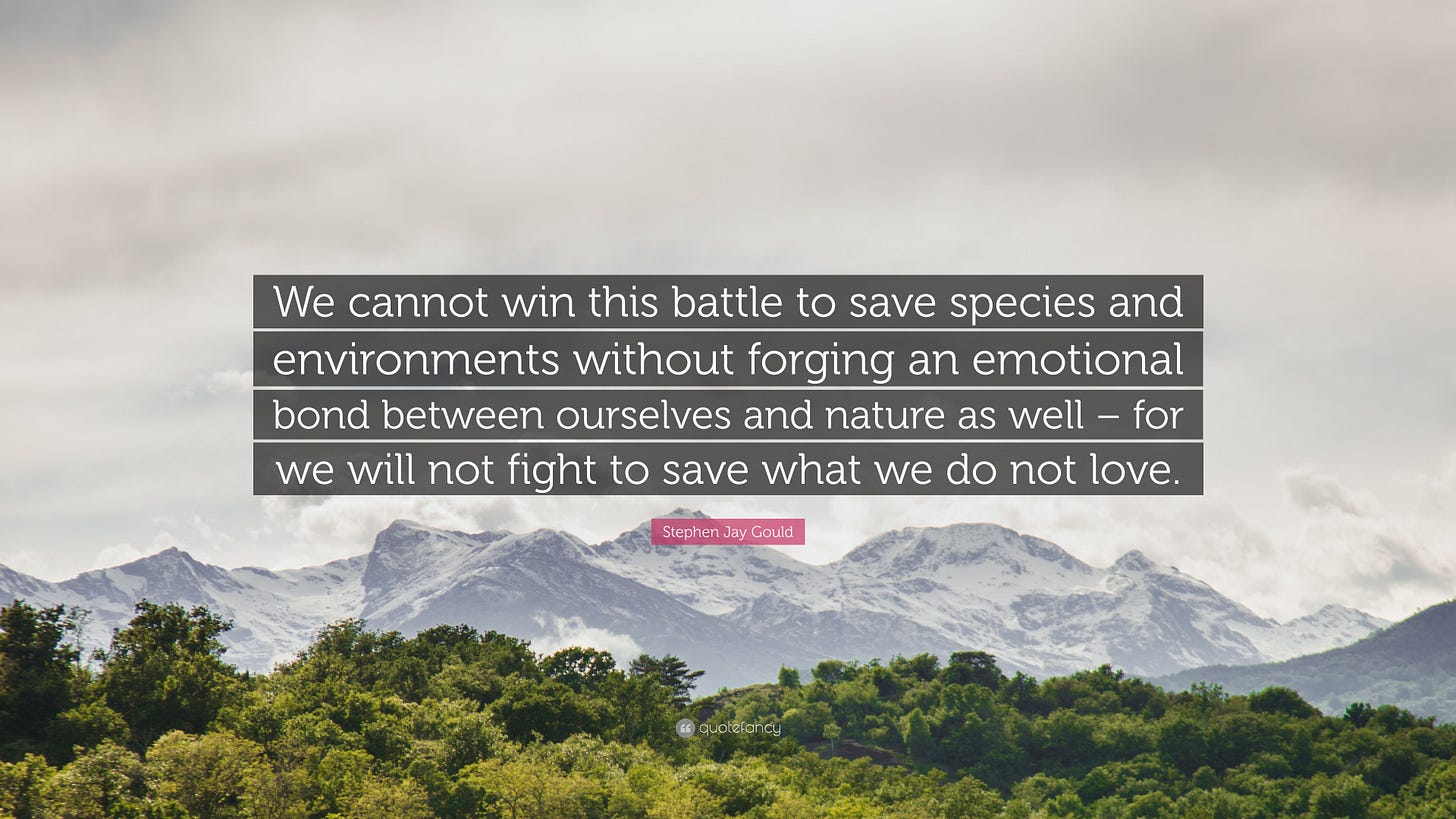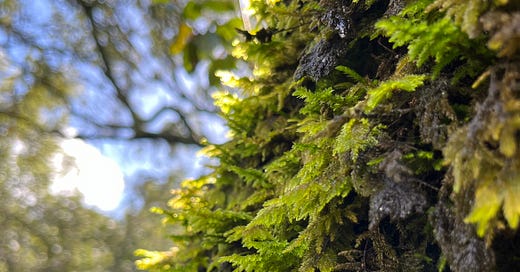1,000 Hours Outside
Facts: How much can carbon farming help? 🧑🌾 🌾| Feelings: Finding purpose between "What should we do?" + "What can I do?" 🎯 🌱 | Action: 1,000 hours outside! ☀️❄️
Welcome to We Can Fix It, where we tackle the climate crisis with facts, feelings, and action. Written by me, your friendly neighborhood climate scientist Kim Nicholas.
Hi friends! I hope you enjoyed real rest over the holidays, and are finding new energy for 2024.
This month I have a brand-new study from my lab to share with you, bringing some of the sky-high claims about regenerative agriculture down to Earth, while showing lots of potential. I share a rare moment of feeling energized by thoughtful use of climate tech, and my latest action for connecting with nature and staying in this work for the long haul: aiming to spend 1,000 hours outside this year. Let’s dive in!
Facts: Measuring Regenerative Ag
What can farmers do to help slow climate change?
One option is to use farming practices that pull carbon from the air (where it causes warming, boo!) to soil (where it benefits ecosystems and slows climate change, yay!).
There’s lots of interest in carbon-enhancing or “regenerative” farming. (Regenerative farming is poorly defined. It most often refers to farming outcomes, like improving soil health and organic matter, but can also refer to farming practices like planting cover crops.)
So far, though, there’s very little data to quantify how much regenerative agriculture can actually achieve the outcome of increased carbon storage in soils.
In a brand-new study, Jessica Villat and I showed that seven regenerative practices can indeed help increase carbon storage in agricultural soils. The practices are:
Animal integration: Using animals on cropland, like sheep grazing in vineyards
Non-chemical pest management: Eliminating chemical inputs like herbicides & pesticides
Cover crop: Growing vegetation amidst the harvested crop, like in vineyard alleys and under the vines
Legume cover crop: Using a nitrogen-fixing cover crop instead of adding fertilizer
No-tillage: Eliminating soil plowing, or reduced and rotational tillage with shallow organic amendments
Agroforestry: Integrating trees and shrubs with the main crop
Non-chemical fertilizer: Replacing synthetic with organic fertilizers
Combining two practices (for example, cover crops + no-tillage) may further enhance carbon storage.
Overall, we found woody perennials like grapevines (blue bars below) took up more carbon than annual crops (orange bars), meaning winegrowing seems particularly favorable for regenerative ag. Here’s our data:

In total, we found 345 measurements in the literature of regenerative practices that met our study criteria. Of these, almost 3/4 were reported for annual croplands, and over 2/3 were for the impact of one practice, non-chemical fertilizer.
So we need more research in perennial systems like vineyards, and for the practices that only report a handful of cases. We point out that small sample sizes prevented us from demonstrating statistically significant differences between practices or land uses (except for non-chemical fertilizer). The practices with the largest sample sizes (and thus the most reliable estimates) had among the lowest estimated carbon storage rates, so it’s important to be cautious about current estimates of the quantitative potential for regenerative ag to sequester carbon.
Still, we found evidence that all seven of the regenerative farming practices we studied contribute to soil carbon storage, perhaps especially when combined. These practices also provide other benefits, and there is good reason to expand and support farming practices that are good for soil, health, and climate.
Feelings: What should we do? What can I do?
I recently had the chance to visit a bunch of smart people doing cool things at MIT, like Dr. Ariel Furst, who is developing self-fertilizing seeds coated in beneficial microbes.
As you know, dear reader, I’m cautious about over-relying on tech solutions to the climate crisis. Research shows unrealistic expectations for technology to solve climate change decreased (1) climate policy support and (2) political engagement, two things we desperately need more of! Vague handwaving about possible technical breakthroughs down the road can even be used as a discourse of climate delay.
But! I loved the way the folks I met at MIT were thinking about the climate problem. They looked at a problem that needs to be solved, like producing zero-carbon energy, or sustaining productive food systems on healthy soils. They looked at their own skill set. And they found a way to apply their strengths towards solving a big, important problem.
To make this approach work, it’s key to solve the right problem. A common beef I have with tech solutions is that they often solve the wrong problem, or sometimes they’re a solution in search of a problem. (Like the current over-focus on carbon removal, without adequate emphasis on the need to eliminate carbon pollution in the first place.)
But when you see people look at root causes, and do what they can to solve a problem— it’s a beautiful thing to behold. It’s inspiring to see folks applying their creativity and energy to big important problems. It’s exciting to see real progress and imagine things getting better.
So right now I’m feeling energized by asking:
What should we do? What would a society and a world who cared about climate stability, justice, people, and nature do?
What can I do? What can I personally do to help create the conditions to move in that direction? As my friend Josh says, what can I do to show up and do my part?
What do you think? I’d love to hear your answers in the comments.
Action: 1,000 Hours Outside

For 2024, I aim to spend 1,000 hours outside. Want to join me??
I can feel my mood is better and I have more energy when I spend regular time outdoors. Many of my favorite moments from last year happened outside: getting out on the water for a quick sail before sunset; marveling at how much the beans have grown in the garden; noticing the light through the leaves while reading in the hammock; a moonlight forest walk with friends through the first snow.
And research shows time in nature builds a sense of place, as well as a sense of agency and responsibility to protect nature.
1,000 hours feels ambitious to me, but I know I already spend more time than that on screens, which isn’t always contributing to making me feel good.
(1,000 hours/365 days = 2.7 hours/day outside. My phone tells me I average around 4 hours/day on that tiny screen alone, ack!!)
According to @1000hoursoutside, the average American kid spends about
☀️25-40 hours in unstructured play outside, and
📱 1,200 hours on screens each year.
I hope this challenge will help nudge me to choose sunshine over screens when I can. Whatever number I hit, building a habit of daily time outside (especially in Swedish winter, and when my routines are disrupted by travel) will feel like a win for me.
I want to be spending time enjoying and connecting with my environment. And this practice will keep me connected to my work to protect the places I love.
How does it work?
I was aiming for 1 hour per day in January, and I made it! (42.5 hours and counting.) I’ll aim to increase my time outside with longer, sunnier days ahead. :)
Adjusting throughout the year was a tip from @1000HoursOutside on Instagram— check out how it adds up!
There are lots of ways to keep track of your time outside, on paper or digitally. I don’t want to feel too rigid about it, so I gave up on using timers and just make a rough time estimate in my head. (I also learned that Apple Watch estimates “Time in Daylight” under Health.)
I found it easy to use the 1000 Hours Outside app (it costs $3.99) to keep track by day. (I love the idea of their analog coloring sheet, but I’ve been moving around a lot this month and it was harder for me to keep up.)

Some ways I’ve found to get outside so far:
Having morning coffee on the porch/balcony.
Bringing a meal outside.
Scheduling a phone call instead of a Zoom to have a walking meeting with headphones, and encouraging my conversation partner to join me!
Taking a friends’ dog for a walk.
If the sun is shining, trying to get out to enjoy it now, at least for 10 minutes— screen work can wait until it’s cloudy!
Telling friends I’m visiting that I want to go for a hike with them.
Taking a walk for the last 15 minutes of a conference lunch break.
Walking between meetings instead of taking a bus.
Suggesting we sit outside when meeting friends for coffee or lunch.
Picking up trash on a hike last weekend. (I’d forgotten to bring a trash bag, but a kind stranger shared one of her dog poop bags!)
Rediscovering the joy of birding, thanks to my friend Jennifer who brought binoculars on our walk.
Downloading the free Merlin Bird ID app from Cornell, which identifies birds by song. It’s incredible how many species live even in suburban backyards!
How are you planning to get outside in 2024? Do you want to join me in aiming for 1,000 hours, or whatever feels like the right goal for you? Let me know in the comments. 👇
P.S. Thanks to Jennie @cedarhavenhomestead for posting her family’s 2nd year in a row of spending 1,000 hours outside and inspiring me!
Parting Tidbits
Okay, I know We Can Fix It readers have some strong and varied views on the Swedish monarchy. Here’s my thoughts for The Guardian for their story on how elites can help shape a cultural shift:
“Elites are role models and have a big influence in setting cultural norms and aspirations,” said Kimberly Nicholas, a sustainability scientist at Lund University in Sweden. “When you see our crown princess in jeans, hiking along a trail you can reach by public transport an hour from your house, it sends the signal that the high life can be low carbon.
“These images plant a seed. Maybe when people are planning their next holiday, they think of a train trip to explore a new part of the country, rather than a flight to an exotic beach.”
Quoted from Ajit Niranjan’s article in The Guardian
Podcast Recommendation:
Electric Avenue, SOLD OUT: Rethinking Housing in America. This was a fantastic listen, about a block in East Oakland mobilizing to collectively electrify and ditch natural gas on a neighborhood scale. It’s not straightforward, but it’s inspiring to see a high-impact action like this scaling up. Have a listen, and consider starting a chat group for your own block??
xo,
Kim







Aha, I do nothing since, where I live getting greener might be more resource intensive than how I live now. so no problem to solve about climate change from myside. Sitting down at the backyard with a cup of tea, prepared by fire wood in the kitchen that doesn't have any light produced at the cost of polluting atmosphere, but sorry I couldn't help burning firewood. Charging my laptop form a solar panel since we don't have access to electricity grid. But yeah I need to adopt myself to a changing climate since I am afraid of being flushed by floods, just like my cousins on the other side of the valley. Love form Pakistan. Izhar Kazmi.
Yet another great article. Thanks for all the insights and love the 1000 hours outside challenge!
Do you also know some studies about regenerative seaweed farming?